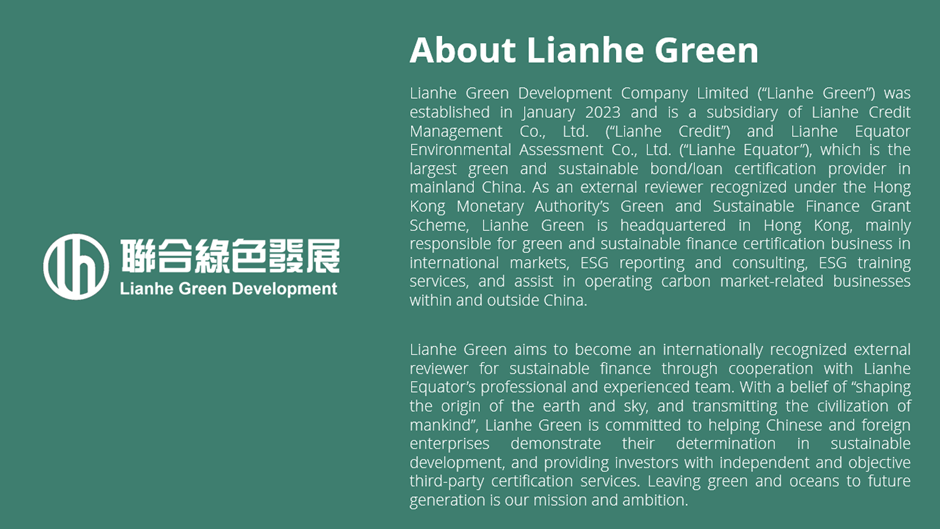 return
return
 current location:Home
current location:Home
 News and Events
News and Events
 News and Events
News and Events
 【ESG News】Global Trends Biweekly Newsletter Issue 38 (2025.7.14-2025.7.27)
【ESG News】Global Trends Biweekly Newsletter Issue 38 (2025.7.14-2025.7.27)
 return
return
 current location:Home
current location:Home
 News and Events
News and Events
 News and Events
News and Events
 【ESG News】Global Trends Biweekly Newsletter Issue 38 (2025.7.14-2025.7.27)
【ESG News】Global Trends Biweekly Newsletter Issue 38 (2025.7.14-2025.7.27)
category:News and EventsRelease time:2025-07-28

International ESG trends
The Joint Statement by Chinese and European Leaders on Combating Climate Change – The Way Forward After the 10th Anniversary of the Paris Agreement
Both sides agree to jointly play a leading role, promoting a global just transition while advancing sustainable development and eradicating poverty, and are committed to:
1. Upholding the central role of the United Nations Framework Convention on Climate Change (UNFCCC) and the Paris Agreement, and fully and accurately implementing their goals and principles.
2. Strengthening pragmatic actions, transforming their respective climate goals into tangible outcomes through comprehensive policy frameworks and solid action plans.
3. Working with all parties to support Brazil in successfully hosting the 30th Conference of the Parties (COP30) to the UNFCCC, and promoting ambitious, fair, balanced, and inclusive outcomes at the conference.
4. Accelerating the global deployment of renewable energy, facilitating the flow of high-quality green technologies and products, and ensuring that all countries, including developing countries, have access to, can afford, and can effectively use these technologies and products.
5. Enhancing efforts and support for climate change adaptation to accelerate large-scale actions at all levels, from local to global.
6. Submitting their respective Nationally Determined Contributions (NDCs) for 2035 before COP30. These NDCs will cover the entire economy, including all greenhouse gases, and will be in line with the long-term temperature goals of the Paris Agreement.
7. Strengthening bilateral cooperation in areas such as energy transition, climate adaptation, methane emission control, carbon markets, and green and low-carbon technologies, to jointly advance their respective green and low-carbon transition processes.
Source: 中欧领导人关于应对气候变化的联合声明——《巴黎协定》达成10周年后的前进方向_中华人民共和国外交部
Lianhe Green Insights
China-EU climate cooperation demonstrates the responsibility of major powers and injects certainty into global green governance. Both sides adhere to multilateralism and the principle of shared responsibility, promoting a just transition through pragmatic actions. This approach not only reflects the balance between sustainable development and poverty reduction but also provides accessible solutions for developing countries. This joint statement sets a positive tone for COP30 and showcases leadership in addressing the climate crisis.
SBTi Launches Net-Zero Standard for Financial Institutions, Aligning Global Portfolios with 2050 Climate Goals
In July 2025, the Science Based Targets initiative (SBTi) officially launched the Financial Institutions Net-Zero Standard (FINZ). This standard provides a framework for banks, investors, and other financial institutions to set science-based targets aligned with net-zero emissions across their lending, investment, insurance, and capital markets activities.
Addressing the unique challenges faced by financial institutions, the standard focuses on high-emitting activities. It expects financial institutions to assess, monitor, disclose, and address deforestation risks in their portfolios, as well as to outline clear steps and timelines for the transition away from fossil fuels.
The development of this standard involved extensive research and testing, including two public consultations, pilot testing by over 30 financial institutions, and rigorous validation by experts from non-governmental organizations, academia, and industry. To date, nearly 135 financial institutions across six continents have committed to setting net-zero targets in line with this standard, demonstrating strong market demand.
Source: The SBTi opens net-zero standard for finance industry - Science Based Targets Initiative
Lianhe Green Insights
The SBTi has released the Net-Zero Standard for Financial Institutions, providing a milestone guidance framework for global financial institutions to set net-zero targets. For the institutions themselves, setting targets in line with the standard will help them effectively manage climate-related risks and direct capital toward low-carbon and sustainable development areas, thus accelerating the global economy’s green transition. The launch of this standard will lead financial institutions to play a more active and influential role in combating climate change.
Mainland China ESG trends
Notice on the Issuance of the Catalogue of Green Finance Supported Projects (2025 Edition) by the People's Bank of China, the Financial Regulation Administration, and the China Securities Regulatory Commission
The People's Bank of China, the Financial Regulation Administration, and the China Securities Regulatory Commission have revised and formulated the Catalogue of Green Finance Supported Projects (2025 Edition) based on the Catalogue of Guiding Industries for Green and Low-Carbon Transition (2024 Edition) and the Catalogue of Projects Supported by Green Bonds (2021 Edition) (issued under Circular Yinfabu [2021] No. 96).
The Catalogue of Green Finance Supported Projects (2025 Edition) will come into effect from October 1, 2025.
Source: https://www.gov.cn/zhengce/zhengceku/202507/content_7032004.htm
Lianhe Green Insights
The Catalogue of Green Finance Supported Projects (2025 Edition) expands its coverage to nine major green industry sectors, encompassing over 1,000 categories of national economic activities. This not only helps financial institutions quickly identify green projects but also establishes a clear and transparent pathway for enterprises to report projects, disclose carbon performance, and connect with financial instruments.
Additionally, the new edition introduces a classification for carbon emission reduction attributes, echoing the “Green Empowerment Projects” in the Green Bond Principles and reflecting recognition and accommodation of the “indirect contribution” mechanism within the green finance support system.
Lianhe Green believes that the Catalogue of Green Finance Supported Projects (2025 Edition) is not only an important milestone in the construction of China's green finance standards system, but also a key hub connecting green finance, carbon markets, transition finance, and ESG investment.
World's first international standard proposal on product carbon footprint in the photovoltaic sector approved for establishment
On July 22, the international standard proposal "Product Category Rules for Carbon Footprint of Photovoltaic Products – Part 1: PV Modules" initiated by China was officially approved for establishment. This marks the world's first international standard dedicated to carbon footprint accounting in the photovoltaic sector, representing a critical step toward global consensus and unified methodologies for PV module carbon footprint assessment.
The standard aims to establish globally consistent rules for lifecycle carbon footprint accounting of PV modules and develop a scientific data quality evaluation model. It will enhance the spatiotemporal alignment of carbon footprint factors with localized data, address limitations of international generic databases, and provide scientific baselines and implementation pathways for PV module carbon emission quantification. This initiative will help foster an open, fair, and transparent global photovoltaic market.
Source: https://www.samr.gov.cn/xw/sj/art/2025/art_2d6564afcaba421782e22ce2c33306bb.html%E3%80%81
Lianhe Green Insights
The approval of this standard highlights China's leading contribution to green development in the global photovoltaic industry. By spearheading the establishment of unified accounting standards, it will not only strengthen the international influence of China's PV sector but also accelerate low-carbon collaboration across the global PV supply chain, providing an actionable standardized pathway for worldwide energy transition and the achievement of carbon neutrality goals.
